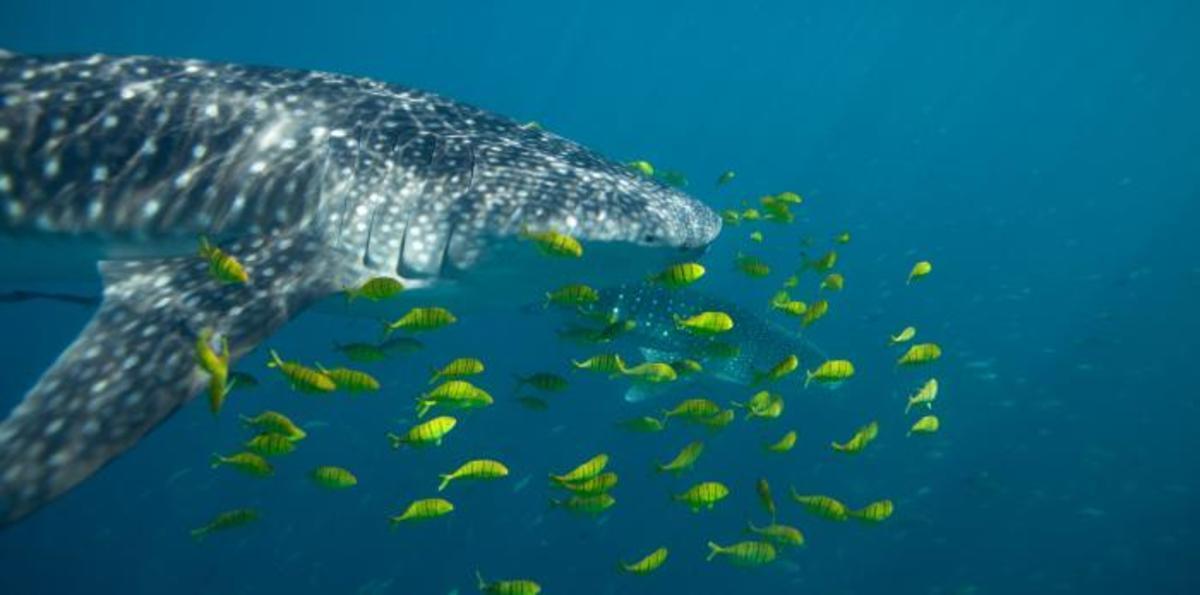PAOC Spotlights
Red Sea ‘Hotspot’ Study Reveals Behaviors of Whale Sharks

Read this at Woods Hole Oceanographic Institution
A new study of whale shark movements near a known hotspot in the Red Sea sheds light on their behaviors and could help inform the conservation efforts of the largest known fish, which can reach lengths of 40 feet or more.
An international team utilized a combination of visual census, acoustic monitoring, and satellite telemetry to monitor 84 whale sharks and track their long-term movement patterns near the Shib Habil reef. The six-year study by King Abdullah University for Science and Technology (KAUST) in Saudi Arabia and researchers at Woods Hole Oceanographic Institution (WHOI), published in the journal PLOS ONE.
The study found that the aggregation was highly seasonal, with sharks most abundant during the months of April and May. Many of the sharks returned to the hotspot regularly year after year. The research also showed that roughly equal numbers of male and female sharks use the area—a finding in contrast to other hotspots around the globe that are typically dominated by one sex.
“The presence of large numbers of juvenile whale sharks in the southern Red Sea suggests that the area is of global significance to whale shark conservation efforts,” says WHOI biologist Simon Thorrold, a coauthor of the paper. “However, where these sharks go after reaching sexual maturity remains a mystery that will require further studies.”
Whale sharks, which are a slow-moving, filter-feeding species, are considered endangered, according to the International Union for Conservation of Nature. A combination of factors is contributing to the world-wide decrease in their populations, including targeted fishing, loss as bycatch in commercial fisheries, vessel strikes from boat traffic, marine debris, and pollution.
The new data collected in this study could be used to direct local management efforts and help conserve these ocean giants.
This work was supported by KAUST baseline research funds and the U.S. National Science Foundation.
An international team of researchers examined a potential whale shark nursery in the Red Sea, offering insights for conservation. (Video by KAUST)
Story Image: A whale shark swims near Shib Habil reef in the Red Sea. (Photo: Simon Thorrold, Woods Hole Oceanographic Institution)